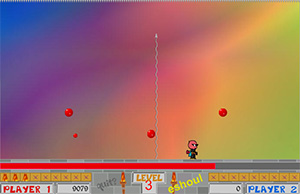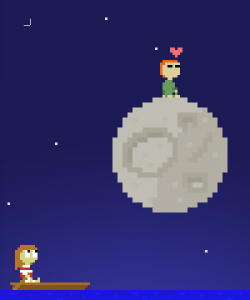
Bubble Struggle – a prime example of Flash Game Ballin’
I found an inspiring forum post by kreso, the Croatian creator of the Bubble Struggle Flash games. He made a thread asking if anybody wanted to buy his sites that generated $10k a month. Many posters weren’t taking him seriously but he stuck to his claims , adding that about half was generated Mochiads and the other by CPX advertisements.
In the end, he found a deal and left an informative post about the story of his game. How , when he was a kid, he sometimes stole his parents money to play the original at an arcade. How he wanted to make a Flash game more compelling than the lame Flash games running rampant. How he sold the game to Miniclip for only $750 way back when, after initially offering $250. Good stuff.
Check it out here:
http://forums.indiegamer.com/showthread.php?p=189080#post189080
An excerpt…
First hours spent on creating Bubble Struggle 1 were actually practicing programming. I created a box that was moving left and right on keypress. Amazing! Then I added bubbles. Wow! Then the harpoon (shot) etc… After I realized that I have all the basic elements of a game I noticed something about internet and got an idea!
What I noticed was this: all of flash games on internet are either a) short in duration (you can finish the whole game within 5-10 minutes) or b) so boring that you don’t want to play it more than 5-10 minutes.
My idea was – what if I would create a game that is a) long in duration b)had a new, different chalenge on every level.
I knew that this ment more programming for me, but as I was just learning and enjoying progamming this was actually a plus. A sidenote: code in my game is disastrous. I just kept adding code for each new level because it was so different than all the others. But I succedded!
If you somehow haven’t played this game before, it’s basically a clone of Buster Bros. It’s a great game and I’ve been wanting to 1-up him by making a game like it myself.
This is one of those “one in a million” success stories that you read about in articles like Gamasutra’s Where’s the Cash for Flash? but it’s definitely encouraging everytime I hear someone having success doing what they genuinely enjoy. Kind of an unfortunate contrast to news that Xbox Live Community Games has yet to yield much success for its developers.
Oh well, let’s make some more games!
















 A few months ago the Gnomon School of Visual Effects in Hollywood hosted a Making of Uncharted: Drake’s Fortune talk, titled
A few months ago the Gnomon School of Visual Effects in Hollywood hosted a Making of Uncharted: Drake’s Fortune talk, titled 
 My co-worker then went to go on about strategy games like
My co-worker then went to go on about strategy games like 
